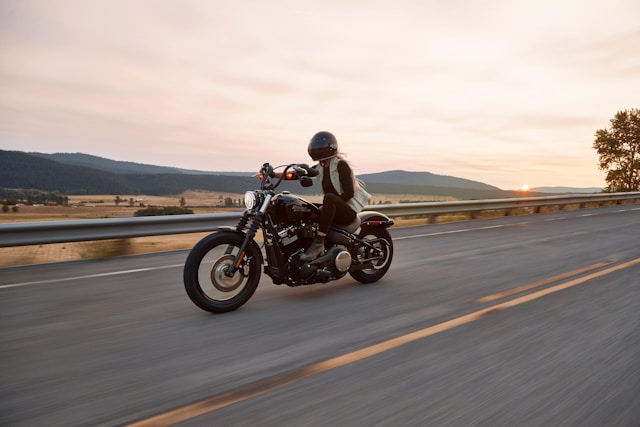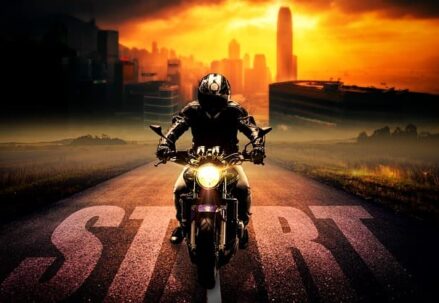The roar of the engine, the spray of dirt, the adrenaline rush – motocross is an exhilarating sport that captures the imagination of riders young and old. But that excitement can quickly turn to frustration, or worse, injury, without the right foundation. Beginners, especially kids diving into motocross tips for kids, often fall into predictable traps that hinder progress and compromise safety. Understanding these common beginner motocross mistakes is the first crucial step towards becoming a confident, capable, and safe rider. Let’s break down the top ten pitfalls and how to avoid them.
1. Skipping Proper Gear (Or Settling for Less)
- The Mistake: Thinking a helmet and jeans are enough, or borrowing ill-fitting, outdated gear. This is arguably the most dangerous error.
- Why It’s Bad: Motocross gear is specifically designed for high-speed impacts, abrasion resistance, and joint protection. Inadequate gear significantly increases the risk of severe head trauma, broken bones, and road rash.
- How to Avoid: Invest in quality, certified gear before hitting the track. Essential items include a DOT/SNELL certified helmet, goggles, jersey, pants, gloves, boots (ankle support is critical!), and a chest protector/roost guard. Ensure everything fits correctly – not too loose, not too tight. For kids, prioritize gear that allows growth but still offers protection now.
2. Riding a Bike That’s Too Big or Too Powerful
- The Mistake: Choosing a bike based on cool factor or future growth, rather than current size, strength, and skill level. Putting a young child on a bike they can’t physically control is a recipe for disaster.
- Why It’s Bad: An oversized or overpowered bike is difficult to handle, heavy to pick up, and intimidating. It leads to fatigue, loss of control, and crashes. The rider can’t develop proper technique because they’re just trying to survive.
- How to Avoid: Be realistic. Start small. A bike where the rider can comfortably touch the ground with both feet and easily reach the controls is essential. Engine size should match experience – 50cc or 65cc for young beginners, moving up only as skills demonstrably improve. Consult reputable dealers or coaches for sizing advice.
3. Ignoring Basic Bike Setup
- The Mistake: Riding the bike straight out of the crate without adjusting fundamental settings like lever position, suspension sag, or tire pressure.
- Why It’s Bad: A bike set up for an average adult (or even a different rider) will feel awkward and unbalanced. Levers too far away make braking/clutching difficult. Incorrect suspension makes the bike handle poorly and can cause arm pump. Wrong tire pressure affects traction and stability.
- How to Avoid: Learn basic setup adjustments. Ensure brake and clutch levers are easily reachable with a slight bend in the elbow. Set suspension sag according to the rider’s weight (crucial for handling!). Check tire pressure regularly (consult manual). For kids, small adjustments make a huge difference in control and confidence.
4. Poor Body Position: The “Death Grip” and Stiff Arms
- The Mistake: Sitting bolt upright, locking elbows, and gripping the handlebars like a vise, especially when nervous or going faster.
- Why It’s Bad: This “death grip” transmits every bump and vibration directly to your arms, causing rapid fatigue and the dreaded “arm pump.” Stiff arms prevent the bike from moving underneath you, making it unstable and difficult to steer. It also limits your ability to absorb impacts with your legs.
- How to Avoid: Focus on being “active” on the bike. Stand on the pegs whenever possible (especially over bumps and corners). Keep elbows up and out, bent like shock absorbers. Grip the tank firmly with your knees to anchor yourself. Hold the handlebars lightly, just enough for control – your legs and core should do most of the work. Practice this standing position even at slow speeds.
5. Neglecting the Clutch and Throttle Control
- The Mistake: Stalling constantly, jerky starts, or “whacking” the throttle open aggressively.
- Why It’s Bad: Poor clutch/throttle control leads to loss of traction, wheelies (unintentional!), stalling in awkward places, and difficulty navigating technical sections smoothly. It makes the bike feel unpredictable and hard to manage.
- How to Avoid: Master the friction point! Practice slow-speed clutch control in a large, open, flat area. Focus on smooth, progressive throttle application. Think “rolling on” the power, not snapping it on. Learn to feather the clutch for tight turns and obstacles. Smoothness equals control.
6. Looking Down, Not Ahead
- The Mistake: Staring directly in front of the front wheel or at the ground just ahead.
- Why It’s Bad: You go where you look! Looking down means you can’t anticipate upcoming obstacles, corners, or other riders. It drastically reduces reaction time and makes you ride reactively instead of proactively. You’ll constantly feel like you’re catching up.
- How to Avoid: Force yourself to look far ahead – at least 10-15 seconds down the track. Scan the terrain, identify your line through the next corner, spot the jump face, and be aware of other riders. Your peripheral vision will handle what’s immediately in front. This is fundamental motocross tips for kids and adults alike.
7. Trying to Go Fast Before Mastering Slow
- The Mistake: Focusing solely on speed and jumps right away, neglecting cornering technique, braking points, and body control fundamentals.
- Why It’s Bad: Speed amplifies mistakes. Without proper technique, going fast leads to crashes, bad habits that are hard to break, and a frustrating lack of real progress. You might clear a jump once, but you won’t be consistent or safe.
- How to Avoid: Embrace the “slow is smooth, smooth is fast” mantra. Spend significant time practicing fundamentals: controlled braking (front and rear), smooth cornering (entry, apex, exit), proper body position transitions, and navigating ruts and bumps at manageable speeds. Speed is the result of good technique, not the starting point.
8. Ignoring Maintenance and Pre-Ride Checks
- The Mistake: Riding the bike until something breaks, or failing to perform basic checks before each ride.
- Why It’s Bad: A mechanical failure mid-ride can cause a serious crash. Loose bolts, low tire pressure, worn brakes, or a dirty air filter can lead to loss of control or engine damage. Neglect breeds unreliability.
- How to Avoid: Make pre-ride checks a non-negotiable habit. Quick checks: Tire pressure, chain tension/lube, brake fluid/lever feel, throttle play, coolant/oil levels (if applicable), and a visual scan for loose bolts or leaks. Learn basic maintenance like air filter cleaning and chain adjustment. A well-maintained bike is a safe bike.
9. Riding Beyond Skill Level (Especially on Jumps)
- The Mistake: Attempting large jumps or technical obstacles before possessing the necessary speed control, body position, and confidence to handle them safely.
- Why It’s Bad: This is a primary cause of serious motocross injuries. “Casing” a jump (landing on the downside or flat) or “looping out” (flipping backwards) can have devastating consequences. It destroys confidence.
- How to Avoid: Progression is key. Master small rollers and tabletop jumps first. Focus on hitting the takeoff consistently at the correct speed for the jump. Practice body position in the air (neutral stance, elbows up). Only move to larger gaps or doubles when you can consistently and safely clear smaller features. Never let peer pressure push you beyond your comfort zone.
10. Neglecting Physical Fitness and Hydration
- The Mistake: Underestimating the physical demands of motocross. Showing up tired, dehydrated, or without basic fitness.
- Why It’s Bad: Motocross is incredibly physically demanding. Fatigue leads to slower reaction times, poor decision-making, loss of concentration, and arm pump. Dehydration drastically reduces performance and increases the risk of cramps and heat exhaustion.
- How to Avoid: Treat motocross like an athletic endeavor. Build cardiovascular fitness (running, cycling) and core strength. Focus on grip and forearm endurance exercises. Always start a ride day well-hydrated and drink water/electrolytes frequently throughout. Eat properly before and after riding. Listen to your body – take breaks when tired.
By recognizing these common beginner motocross mistakes and actively working to avoid them, new riders – especially kids seeking solid motocross tips for kids – can build a strong, safe, and enjoyable foundation for their riding journey. Patience, proper gear, focused practice on fundamentals, and respect for the machine and the sport are the true keys to unlocking the thrill of motocross safely and successfully. Now, gear up, start smart, and enjoy the ride!




